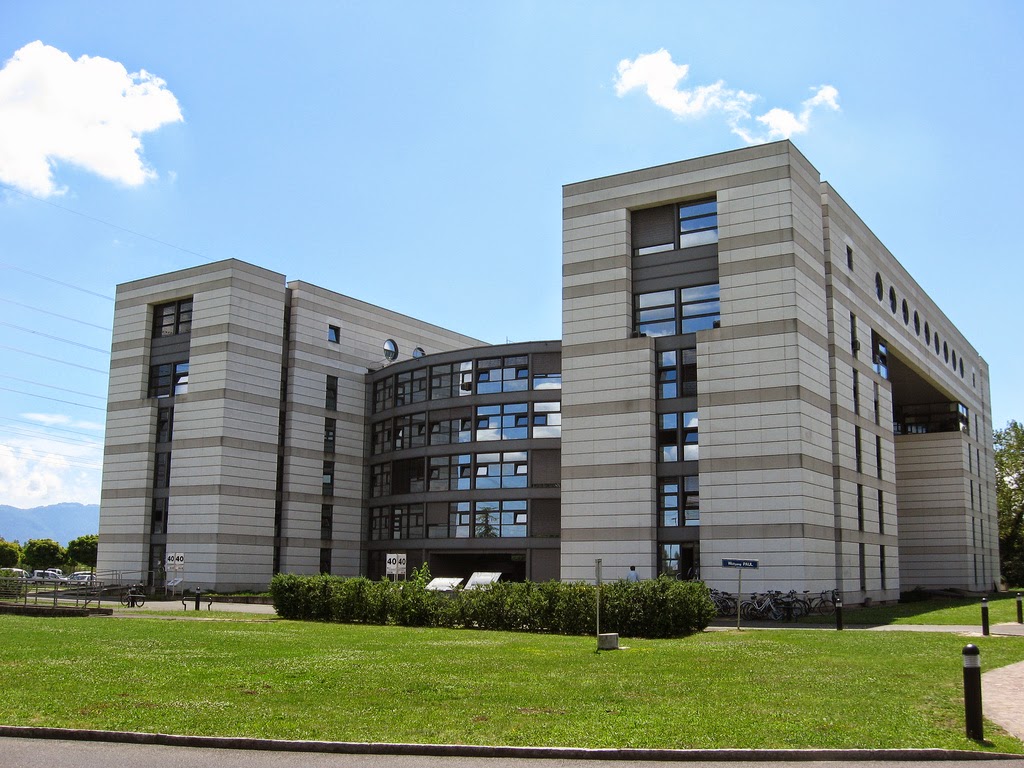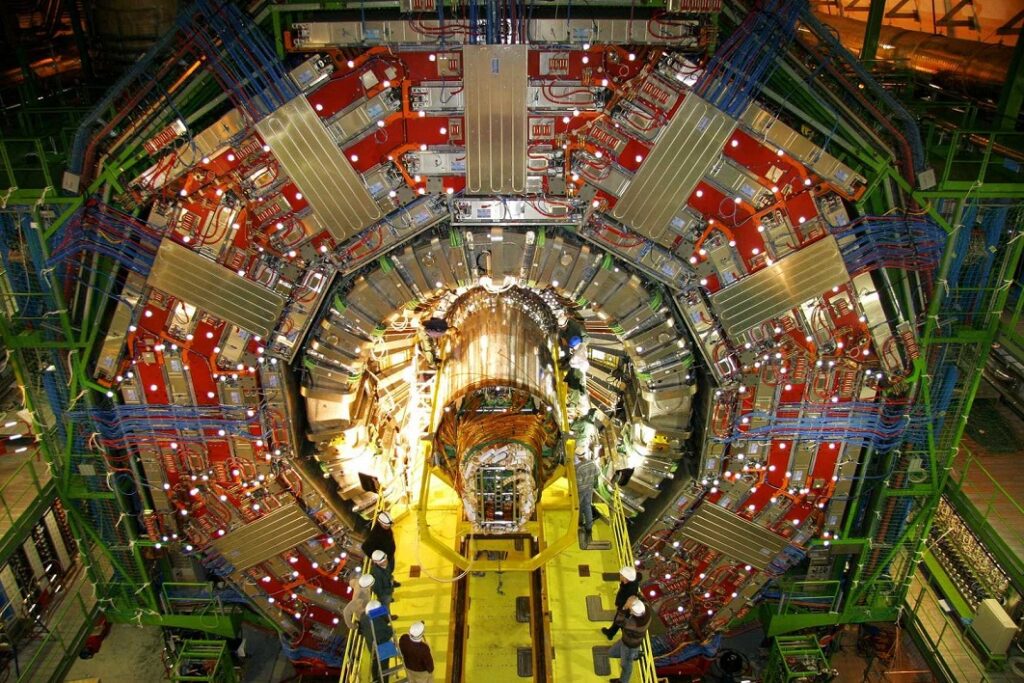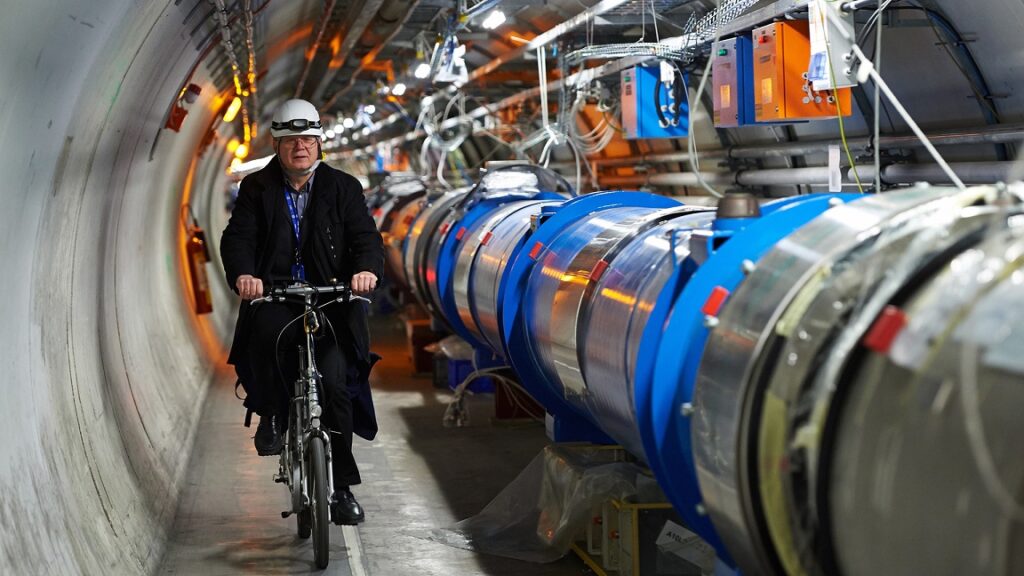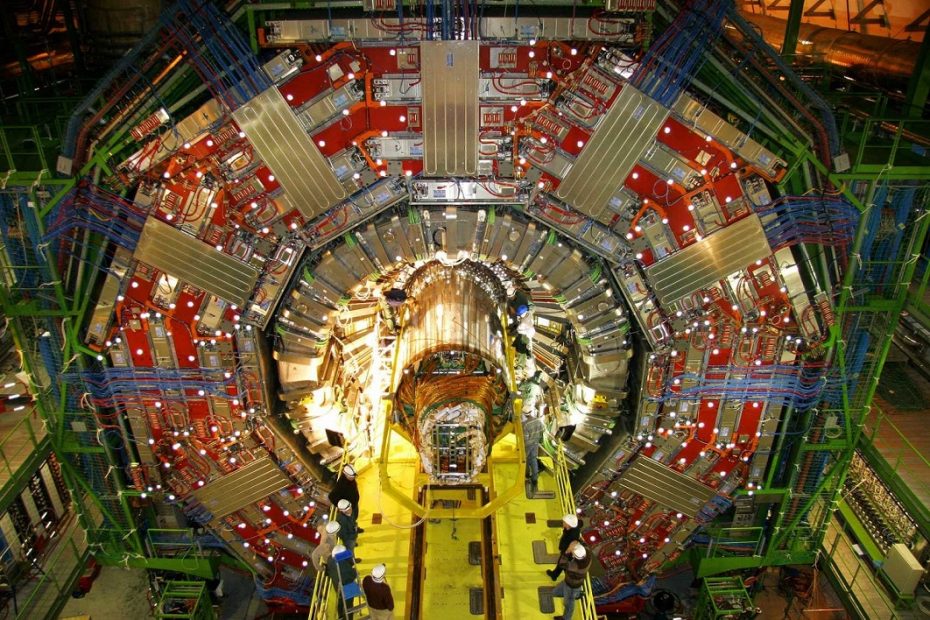On September 29, an organization was founded that studies amazing and little-studied physical processes.

History of creation and technical equipment
In 1949, the French physicist, Nobel Prize winner Louis de Broglie proposed the creation of a European laboratory that would be engaged in fundamental research beyond the scope of government programs.
After 5 years – September 29, 1954 – 12 countries signed an agreement establishing CERN, read CERN (The abbreviation CERN comes from the French name Conseil Européen pour la Recherche Nucléaire and translates as the European Center for Nuclear Research or the European Organization for Nuclear Research).
For research and experiments in high energy physics conducted at CERN, the Large Hadron Collider (Large Hadron Collider, abbreviated as LHC) was created.
The LHC consists of a circle of superconducting magnets with a number of accelerators to increase the energy of the particles. On this circle, special powerful detectors are installed to detect and study elementary particles and their properties:
Detectors to search for the Higgs boson and study “supersymmetry”:
- ATLAS (25x25x46 m, weight 7000 tons)
- CMS (15x15x21 m, weight 12500 tons)
A detector that is optimized for the study of b-quarks:
- LHCb (13x10x21 m, weight 5600 tons)
Detector for studying quark-gluon plasma:
- ALICE (16x16x26 m, weight 10,000 tons)
Related detectors for observing elementary particles:
- TOTEM (length 440 m, weight 3 tons)
- LHCf (Consists of two detectors weighing 40 kg each)
Detector for studying the magnetic monopole of a hypothetical particle with a magnetic charge
- MoEDAL (consists of multilayer detector plates with a total area of 250 m2)

Interesting facts about the Large Hadron Collider:
- The length of the superconducting wire made for VAK is enough to go around the equator almost 7 times.
- The pressure in the hadron collider is only 10-13 atmospheres. This is 10 times lower than on the Moon. Under such conditions, it would take 10,000 years for a punctured tire to deflate.
- The depth of the ATLAS detector, which is located near the CERN building, is 100 meters.
- The most powerful refrigerator with a temperature of -271.3°C was installed.
- The vacuum at the LHC is almost identical to the space one.
- For the convenience of movement in the tunnel, the staff uses bicycles.

CERN achievements:
- 1968. Weak interaction is one of the four fundamental physical interactions between elementary particles along with gravitational, electromagnetic and strong interactions. It is responsible for thermonuclear reaction – the main source of energy of the sun.
- 1983 W- and Z-bosons are discovered.
- 1989 Internet. It arose as a consequence of the idea to facilitate the relationship and exchange of information between scientists. As a result, the first web server, website and browser were created.
- For 1995. Antimatter. Scientists managed to create the first atoms of antimatter (Antihydrogen).
- year 2012. It was possible to experimentally confirm the existence of the Higgs boson. This particle determines the origin of the physical concept of mass.
Current CERN projects:
- The study of cosmic rays and particles.
- The task of the experiment to study antimatter and dark matter
- Use of antiprotons for cancer treatment. Now, proton irradiation is used to fight the disease. The task of scientists is to assess the suitability and effectiveness of antiproton irradiation.
- Study of the properties of antimatter. In fact, an antiparticle is a twin of an ordinary particle. The interaction of antiparticles and particles leads to their mutual annihilation with the release of energy and the appearance of other particles.
- Studying climate and cloud formation
- Detection and study of quark-gluon plasma. This is a state of matter that arose in the first moments after the so-called “Big Bang”. Scientists have already managed to obtain such a plasma with a temperature 100,000 times higher than in the center of the Sun.
- Measurement of the Earth’s gravitational acceleration
- The study of “supersymmetry”. This theory states that each elementary particle has a superparticle with a much larger mass.
- Other projects are related to the study of photon-hadron and photon-photon collisions.
On October 5, 2016 Ukraine became an associate member of the European Organization for Nuclear Research (CERN)
LTU ENTERPRISE IS A REGISTERED SUPPLIER OF THE EUROPEAN ORGANIZATION FOR NUCLEAR RESEARCH CERN, SWITZERLAND (TEC674).
